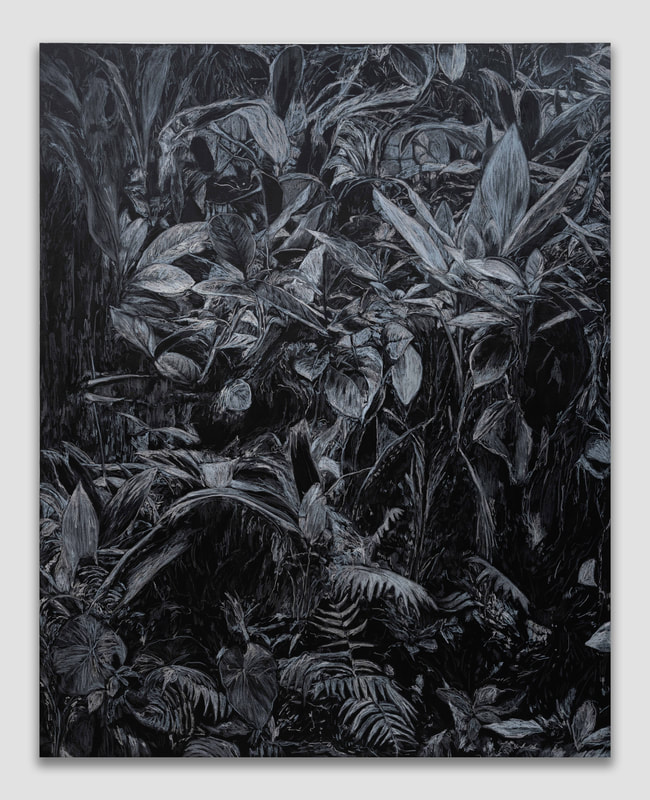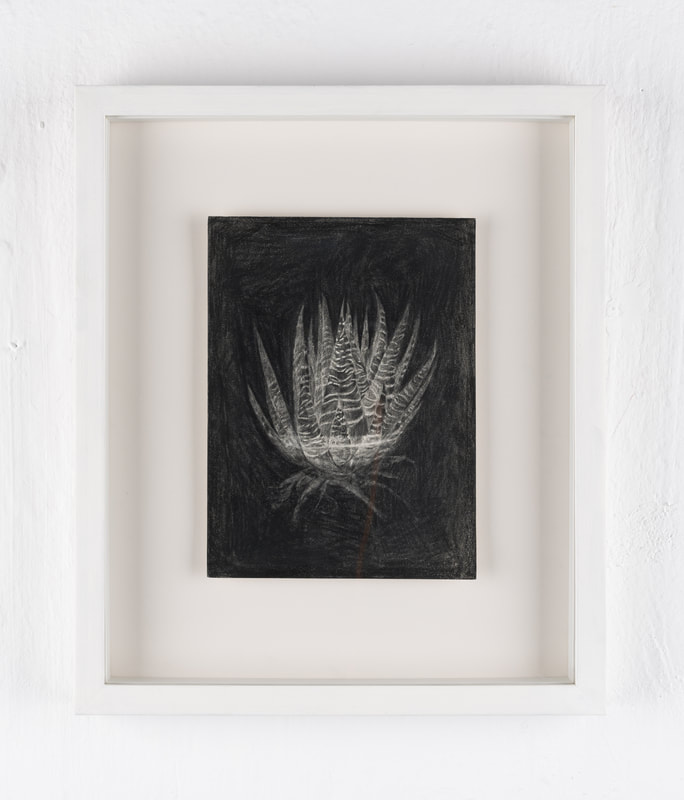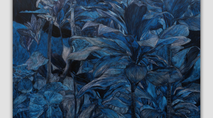Tobe KAN Kiu Sin: Panacea 簡喬倩《萬靈藥》
|
|
Tobe KAN Kiu Sin 簡喬倩
Panacea《萬靈藥》 25 September – 30 October, 2021 Gallery EXIT is pleased to present “The Panacea”, a solo exhibition by Tobe Kan Kiu Sin. The exhibition runs from 25 September to 30 October, 2021. This exhibition features a new series of plant paintings and three-dimensional works by Kan. Most of the large format works were completed in the artist’s studio under self-isolation during the most severe period of the epidemic, while the smaller works were made as a kind of remedy to calm the mind and restore health when the situation was relatively more stable, and around the time when the artist underwent a small operation. The word “panacea” originates from the Greek Panakeia, a goddess of universal remedy in Greek mythology, which also means a solution or remedy for all difficulties or diseases. When in states of stagnation and uncertainty, the artist believes more than ever in the ability of artistic creation to relieve stress and anxiety. But is art really a panacea? Kan has been researching the imagery and significance of the colour blue in psychology, everyday life, popular culture and literature: Blue masks, Three Colours: Blue by Krzysztof Kieślowski, Blue by Derek Jarman, Perfect Blue by Satoshi Kon, Blue Period by Japanese manga artist Tsubasa Yamaguchi, inspired by Picasso, in which a character says, “If you see blue, no matter it is an apple or a rabbit, just paint it blue.” From photographs taken of plants near her studio and in different temples, to found images of films or news reportages, Kan assembles into her paintings a certain languid state, hovering between reality and dream, such that the viewers find themselves lost amidst an illusory blue jungle. A Dream and《Enraptured by this sight, he woke up》pay tribute to the late artist Matthew Wong, who had himself made a series of blue paintings. In the process of creating these two works, as she was listening to the audiobook of Franz Kafka’s short story “A Dream” and upon hearing how the male protagonist strolled towards the graveyard and met an artist, Kan decided to name the two paintings after the title and the last sentence of the story respectively. She only found out later that Wong had also made a painting titled A Dream. Several other works are also named after Kafka’s works. By connecting the imaginations between the imagery of text and image and the viewers’ own experience, Kan attempts to draw the viewers into an illusion that is both ambiguous and absurd. The artist has always been interested in religion and the idea of sacredness. Her Awake series, begun a few years ago, depicts plants in different temples. For Kan, “seeing” is the manifestation of observation and belief. Blue Cathedral is inspired by Raymond Carver’s short story of the same name. Kan is intrigued by the blind man in the story who teaches the male protagonist to draw the cathedral with his eyes closed. She is also deeply inspired by Derek Jarman’s posthumous Blue, filmed after the director had lost his sight to some illness and could only see blue in front of him. Painted all white and fitted with blue glass and a light source, the found old lantern resembles a blue cathedral, symbolising a kind of hope for self-redemption through artistic creation. An extension of the artist’s plants and lethargy series,《Min》and《Mima》portray characters. The two works draw from Blissfully Yours by Thai filmmaker Apichatpong Weerasethakul, in which the male protagonist wanders into the forest on the border in search of pure happiness, and Perfect Blue by Satoshi Kon, whose heroine seems to be recovering from schizophrenia, respectively. In addition, through a change of medium, the artist tries to blur the boundaries between the gallery space and the inside and outside of the picture frame. The《Blue Plants》series materialises the fiddle-leaf fig in Awake 1, giving the painted plants an illusory quality. In 《Ablution》the texture of brushstrokes is manifested in the form of tapestry, thereby transforming the sense of ritual and touch in the original material. The works project the artist’s own desire: To cover those cold body, at least with a piece of blue blanket. The 《Blue Pill》 series is Kan’s reflection on the concept of panacea. The idea of the blue pill originates in The Matrix, symbolising our desire to cling to the fictional reality we are accustomed to. Like the blue pill obscures the real nature of things, does the panacea create dependence on feelings of comfort and security? In《Blue Pill 1》the pills contain a dreamlike blue liquid, resembling the horseshoe crab blood used in vaccine and medicine tests, but is in fact the waste water after the artist washed her paint-stained hands. In a more playful version,《Blue Pill 2》has little blue-painted figurines in the pills. At first the artist thought those figurines inside the transparent capsules would evoke the isolated beings during the epidemic, instead she was reminded of lives lost to it. Other works, such as the four small paintings close to the gallery entrance: Hungry Face, Relative Hysteria, Whisky Time and Fridge Magic, take their names from the original soundtrack of the French TV series “Les Revenants” by Scottish post-rock band Mogwai. “Les Revenants” means “ghosts”, and the story tells of a small Alpine village, where a group of people, dead and forgotten, suddenly and mysteriously return one after the other. By painting plants in different temples, the artist wishes for a more complete farewell ritual for those who experience sudden separations in the real world. Related Articles:
|













